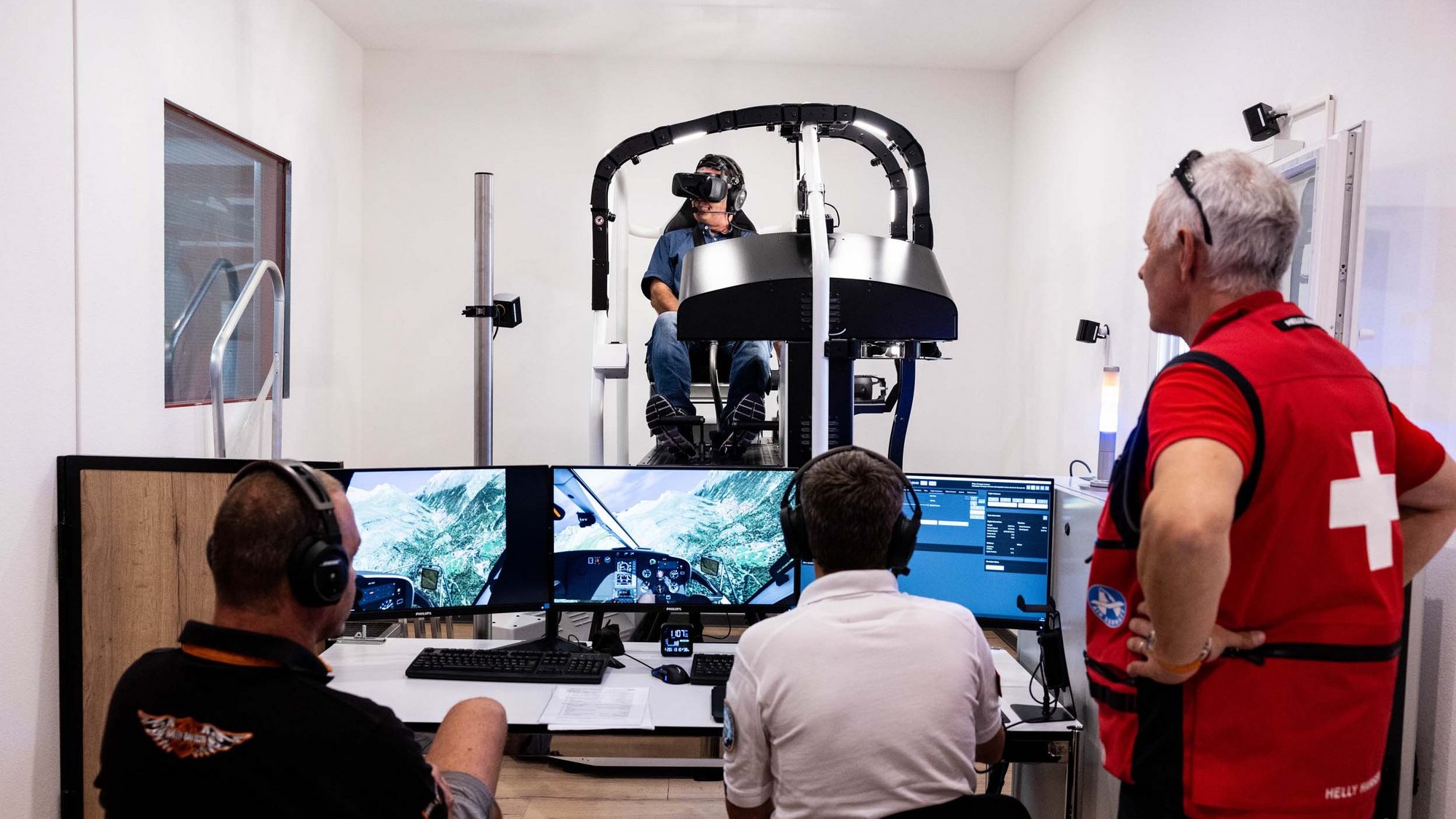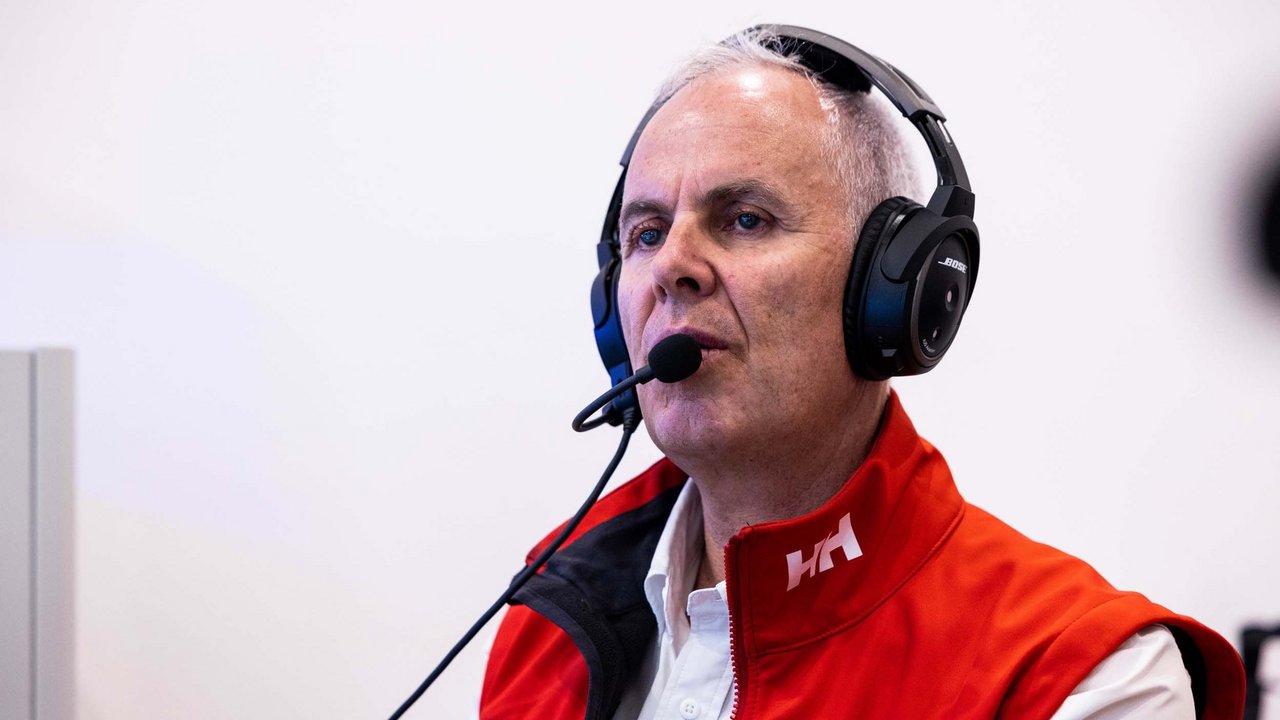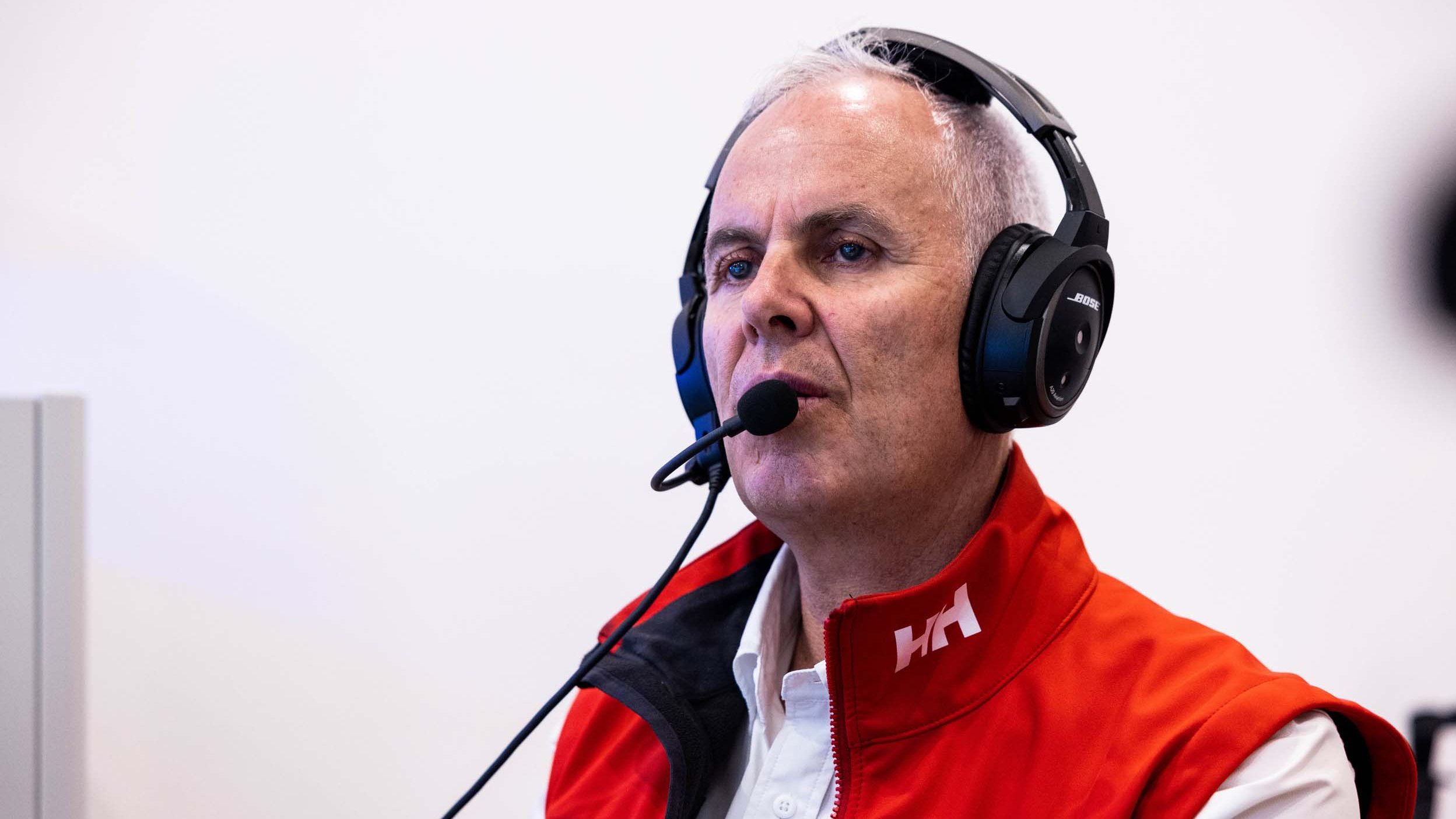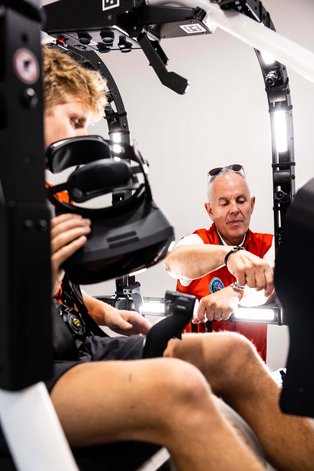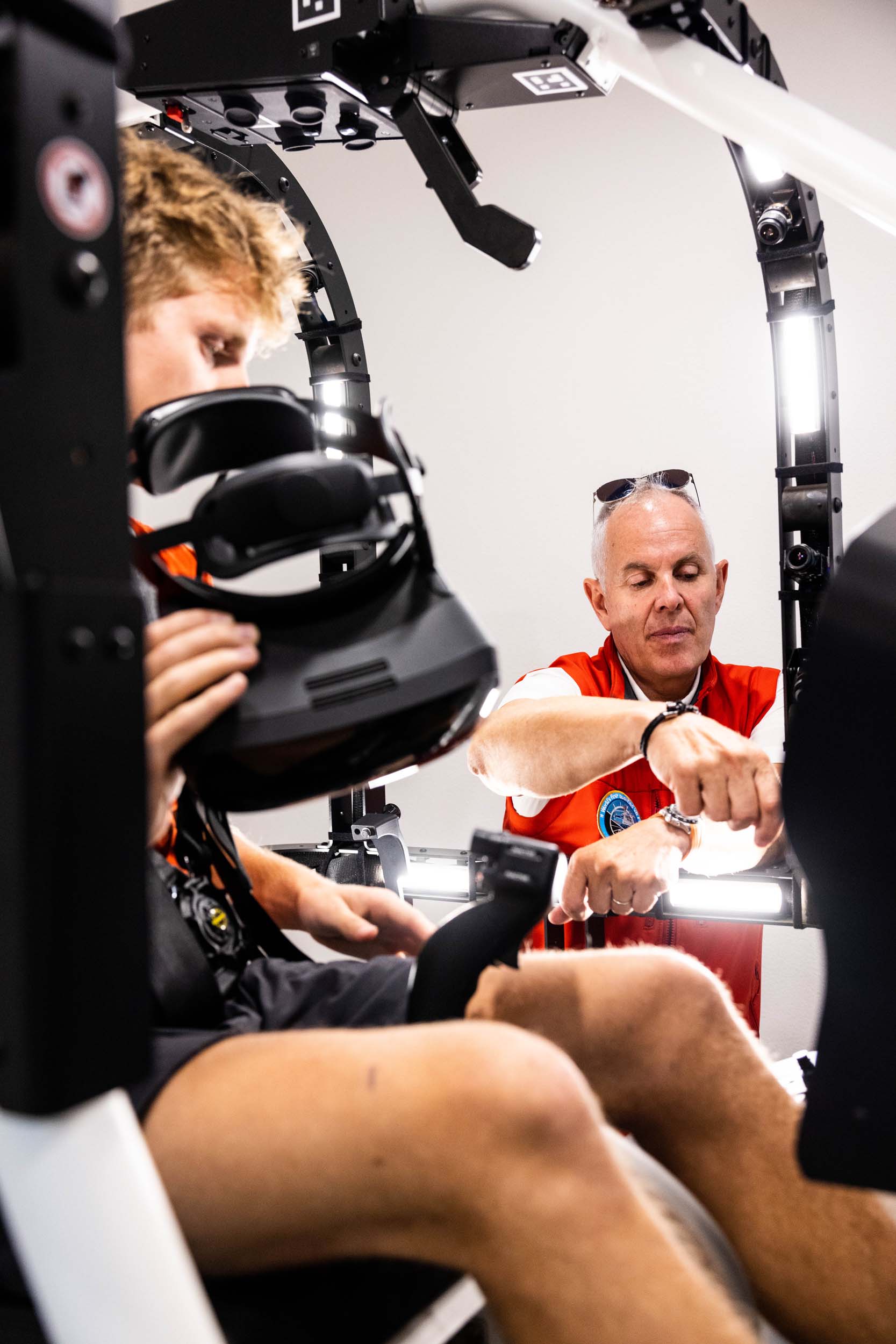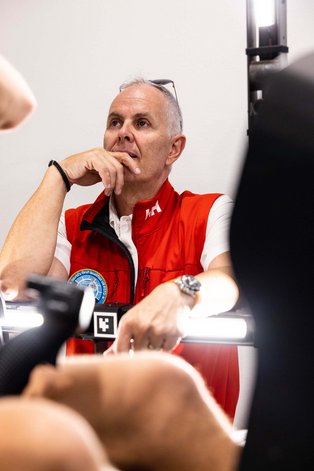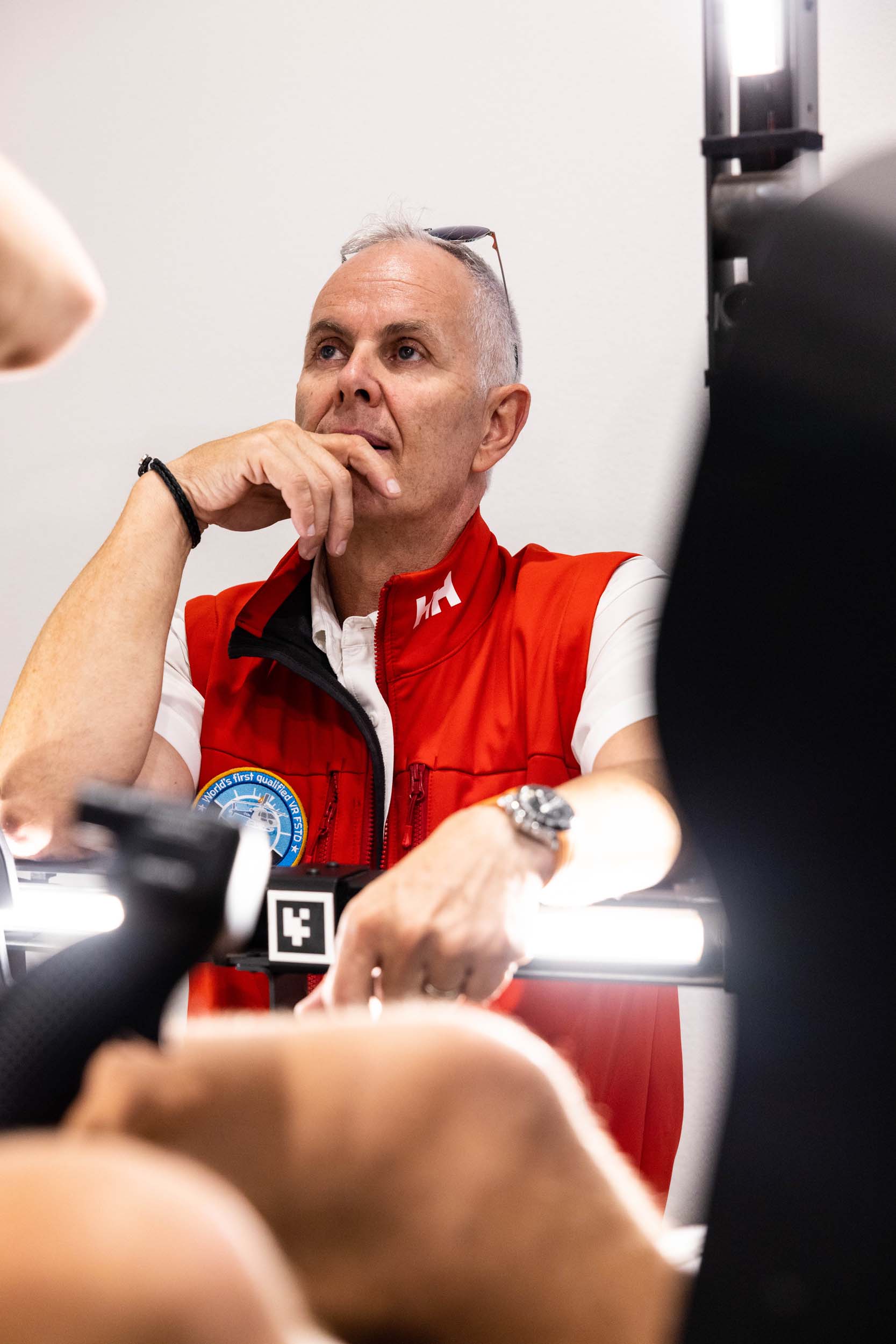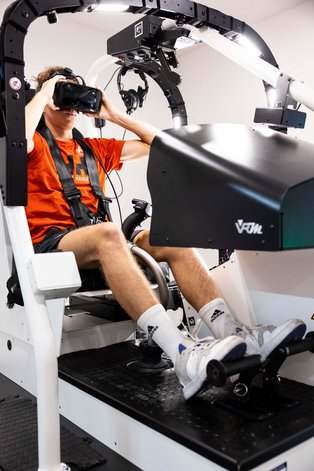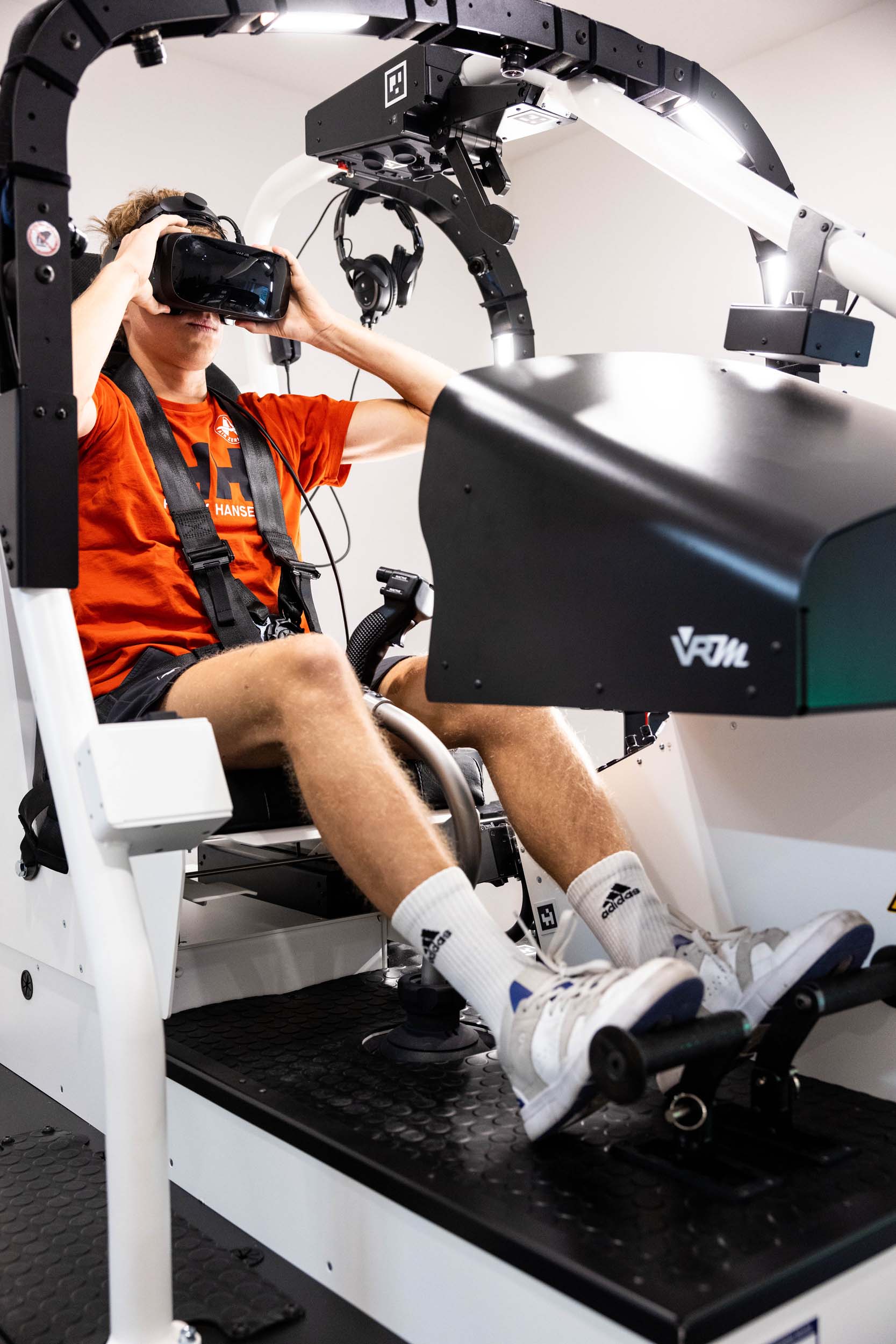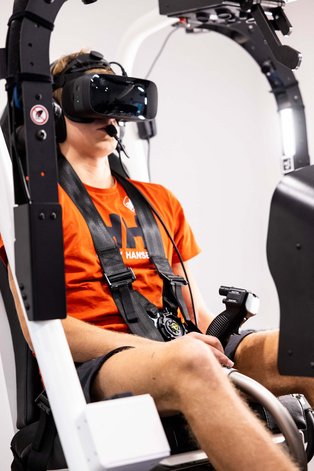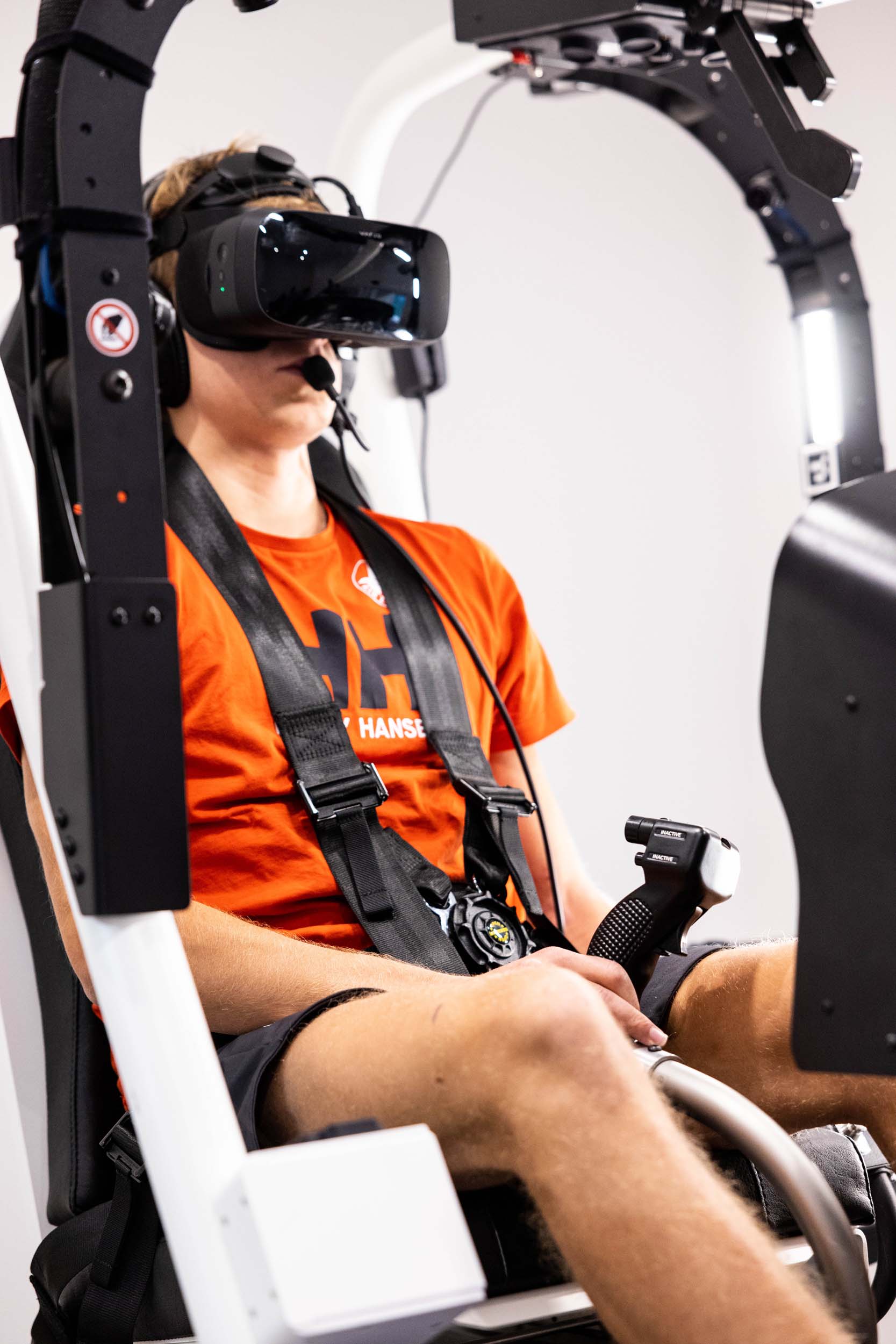Mountain rescue pioneer Air Zermatt is using Loft Dynamics’ training device to train and check their pilots
Transferring developed techniques
Air Zermatt's pilots have always faced critical situations that required them to find solutions. They have developed excellent techniques that have been adopted by many high alpine rescue organizations. All the valuable experience and knowledge is passed on to the young pilots. The realistic simulator from Loft Dynamics allows Air Zermatt to transfer such knowledge without any risk, irrespective of the weather conditions. This in an efficient and cost-effective manner, without burning fuel.
Game-changing technology
Gerold Biner explains from experience, "In simulators with dome projection, the resolution was insufficient, and anything below 30 knots was unrealistic. So, you had to learn to fly the simulator." However, with the high-resolution VR display and the 3D vision of the head-mounted display, pilots can now maneuver close to the ground and precisely below 30 knots. The combination of VR technology, the avatar, and the cockpit with all the switches allows them to work in the simulator as if it were reality. Biner adds, "The combination of the Vario headset, together with this avatar design and the cockpit where you can use all the switches, makes it the best simulator I've ever flown."

Gerold Biner
CEO & Pilot Air Zermatt
Executing training and checking in the simulator
"Another advantage of this simulator is that all exercises related to license and operator proficiency checks can now be realistically executed in the simulator, this as well below 30 knots. It significantly improves safety and reduces the risk of damage. There are many maneuvers we were not able to train without having a high risk of damaging something," explains the experienced flight instructor.
Reduced planning uncertainties and less operational complexity
Training and checking in a helicopter require extensive planning. Dual controllers need to be installed and the helicopter becomes unavailable for commercial operations. In contrast, the simulator can be used at any time of the day, with reliable planning, as it is unaffected by weather conditions. This reliability makes the crew trainer’s job much easier. By selecting the desired environmental conditions the training or checking program can by tailored according to the respective needs, which increases the effectiveness.


